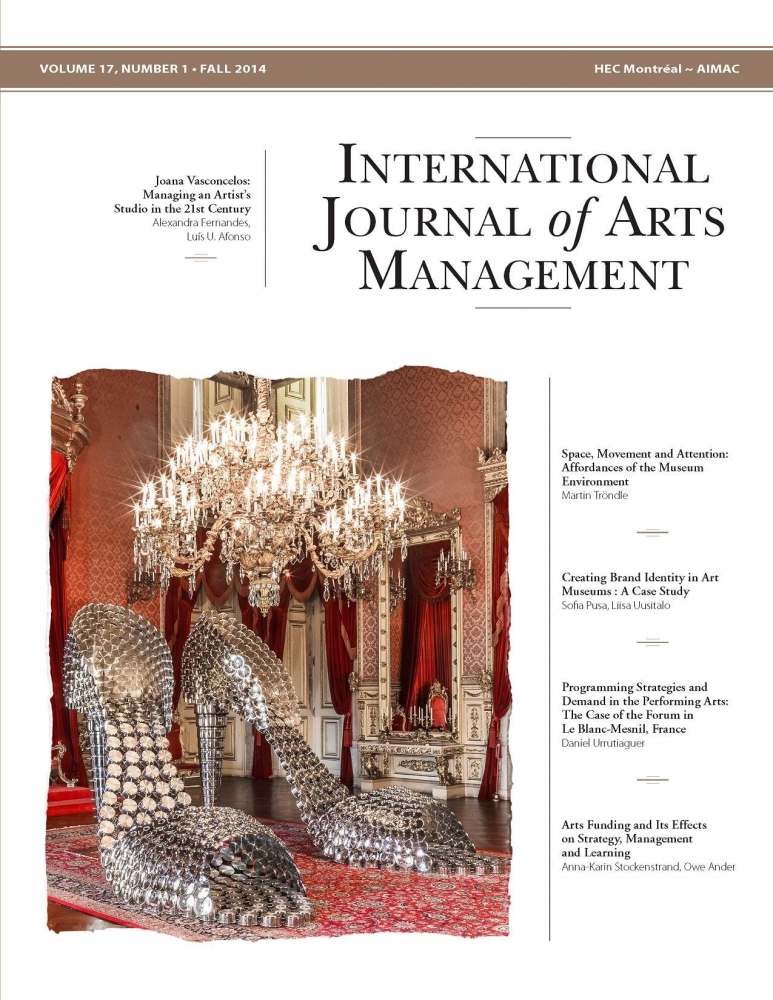IJAM Volume 17 Number 1 (PDF)
Product: Journal
$53.00 CA
EDITOR’S NOTE
Dear readers,
Now that fall 2014 is upon us, we repeat our invitation of a few months ago to submit proposals for the next meeting of the International Association of Arts and Cultural Management (AIMAC), to be held in Marseille, France, from 26 June to 1 July 2015. The Institut de Management Public et Gouvernance Territoriale, Aix Marseille Université, in collaboration with the Kedge Business School, will be hosting this conference, AIMAC’s 13th. The submission deadline is 30 October 2014.
This first issue in IJAM’s 17th volume is in step with the times, featuring a wide range of articles that examine positioning and strategies employed by cultural organizations to spark the public’s interest. The opening article, by Martin Tröndle, presents research results that enable a better understanding of how the architectural layout and use of exhibition space influence the attention of museum visitors. The author describes unusual methodology, which involved the use of an electronic glove to capture and transmit data on the movements of Swiss museumgoers. The results are fascinating and will be useful for both researchers and curators.
The second contribution also examines marketing positioning in the museum milieu, but with a focus on brand management. Through comparative research centred on three museums, Sofia Pusa and Liisa Uusitalo illustrate various ways of creating a brand identity. This article reveals some common factors as well as a few less predictable ones concerning what goes into creating a brand image for a museum.
Daniel Urrutiaguer explores the importance of improving our knowledge of the factors that make the programming of live performance attractive to audiences. His analysis is based on a multiple regression model over a nine-year period, 2002 to 2011, in a multidisciplinary cultural setting, the Forum in the French town of Le Blanc-Mesnil.
In the next article, Anna-Karin Stockenstrand and Owe Ander study the relationship between funding, strategy and management in two orchestras, one in Sweden and the other in the United Kingdom. In terms of the quality of the work of an orchestra, a strategy of differentiation appears to be more suitable than one of cost-reduction.
Lastly, the Company Profile, by Alexandra Fernandes and Luís U. Afonso, takes us to Lisbon and the studio of the artist Joana Vasconcelos. This studio has become a business employing 36 people. It is a good example of not only the use of space, but also management practices and choice of collaborators.
Happy reading!
Johanne Turbide
Editor
